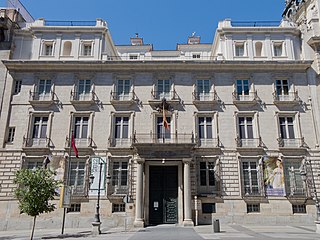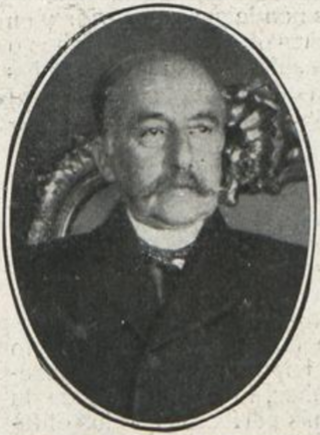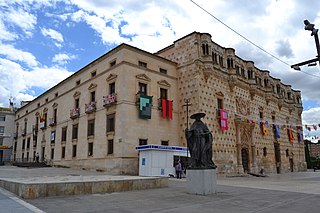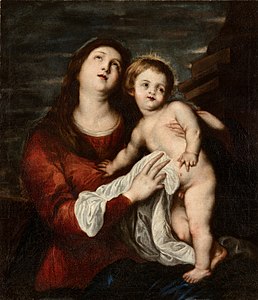
Tourism in Spain is a major contributor to national economic life, contributing to about 11.8% of Spain's GDP. Ever since the 1960s and 1970s, the country has been a popular destination for summer holidays, especially with large numbers of tourists from the United Kingdom, Ireland, Turkey, France, Germany, Italy, the Benelux, and the United States, among others. Accordingly, Spain's foreign tourist industry has grown into the second-biggest in the world.

The Museo del Prado, officially known as Museo Nacional del Prado, is the main Spanish national art museum, located in central Madrid. It houses collections of European art, dating from the 12th century to the early 20th century, based on the former Spanish royal collection, and the single best collection of Spanish art. Founded as a museum of paintings and sculpture in 1819, it also contains important collections of other types of works. The numerous works by Francisco Goya, the single most extensively represented artist, as well as by Hieronymus Bosch, El Greco, Peter Paul Rubens, Titian, and Diego Velázquez, are some of the highlights of the collection. Velázquez and his keen eye and sensibility were also responsible for bringing much of the museum's fine collection of Italian masters to Spain, now one of the largest outside of Italy.

Francisco de Zurbarán was a Spanish painter. He is known primarily for his religious paintings depicting monks, nuns, and martyrs, and for his still-lifes. Zurbarán gained the nickname "Spanish Caravaggio", owing to the forceful use of chiaroscuro in which he excelled.

The National Archaeological Museum is a archaeology museum in Madrid, Spain. It is located on Calle de Serrano beside the Plaza de Colón, sharing its building with the National Library of Spain. It is one of the National Museums of Spain and it is attached to the Ministry of Culture.

The Real Academia de Bellas Artes de San Fernando, located on the Calle de Alcalá in the centre of Madrid, currently functions as a museum and gallery. A public law corporation, it is integrated together with other Spanish royal academies in the Instituto de España.

Antonio de Pereda y Salgado was a Spanish Baroque-era painter, best known for his still lifes.

The Goya Museum is an art museum located in Castres, France. The museum was originally established in 1840 and was named after the Spanish painter Francisco Goya since it specialised in hispanic art from 1947.

The Salón de Reinos or salón grande is a 17th-century building in Madrid, originally a wing of the Buen Retiro Palace. The Salón de Reinos and the Casón del Buen Retiro are the only survivors of the original grand scheme of the palace. Built between 1630 and 1635, the Hall of Realms housed the largest paintings in the royal collection, now all in the Museo del Prado. It is named after its paintings of the coats of arms of the 24 kingdoms which formed the Kingdom of Spain at the time of Philip IV of Spain.

The Archeological Museum of Seville is a museum in Seville, southern Spain, housed in the Pabellón del Renacimiento, one of the pavilions designed by the architect Aníbal González. These pavilions at the Plaza de España were created for the Ibero-American Exposition of 1929.

The Museum of Romanticism is an art museum in Madrid, Spain, devoted to Romanticism. It was inaugurated in 1924 as Museo Romántico. It is one of the National Museums of Spain and it is attached to the Ministry of Culture.

The Lázaro Galdiano Museum is an art museum in Madrid, Spain. It houses the art collection of José Lázaro Galdiano. The museum was inaugurated on 27 January 1951.

The Carmen Thyssen Museum is an art museum in the Spanish city Málaga. The main focus of the museum is 19th-century Spanish painting, predominantly Andalusian, based on the collection of Carmen Cervera, fifth wife of Baron Hans Heinrich Thyssen-Bornemisza.

Municipal Museum of Algeciras is a museum in Algeciras, Spain, located at the northern end of the Parque de las Acacias de Algeciras. It was established in 1995 and is run by the city's cultural department. It houses a large collection of archaeological items which were found in different parts of the city. With its two main divisions, archaeology and history, the museum documents three periods in the city's history: Roman-Byzantine Algeciras, the Andalusian city, and the modern era. A third division, religious art, is located in the Capilla del Cristo de la Alameda.

Enrique de Aguilera y Gamboa, 17th Marquess of Cerralbo, was a Spanish archaeologist and a Carlist politician.
Alexandre-Mathieu Sureda Chappron was a Spanish architect. He worked under the name Alejandro Sureda and is considered "the main populariser of French architectural models amongst the Spanish aristocracy".

María del Carmen Pérez Díe is a Spanish Egyptologist, curator and researcher. She has worked for the National Archaeological Museum of Spain as Curator Head of the Department of Egyptian Antiquities and the Middle East since 1980. Pérez Díe served as the museum's director between 1991 and 1997.

The Museum of Guadalajara is a State-owned museum in Guadalajara, Spain. Opened in 1838, it is the oldest provincial museum in the country. It features sections of Fine Arts, Archaeology and Ethnography. It is hosted at the Palacio del Infantado since 1973.

Isabel de Ceballos-Escalera y Contreras was a Spanish museum director and curator. She was deputy director of the Museo del Prado and director of the Museo Nacional de Artes Decorativas, and a member of the Hispanic Society of America. A laureate of the Civil Order of Alfonso X, the Wise, she is considered one of the world's great specialists in Spanish ceramics.

























